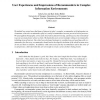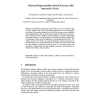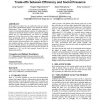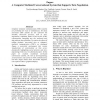VR
2010
IEEE
14 years 23 days ago
2010
IEEE
Exploring the relationship between social presence, conversational expressiveness, and robot acceptance, we set up an experiment with a robot in an eldercare institution, comparing...
CHI
2010
ACM
14 years 1 months ago
2010
ACM
People share pictures online to increase their social presence. However, recent studies have shown that most of the content shared in social networks is not looked at by peers. Pr...
PSYCHNOLOGY
2008
14 years 1 months ago
2008
The current study belongs to a series of studies promoted by the EU funded project "PASION", which focuses on augmenting social presence. The underlying assumptions to t...
IJMMS
2008
14 years 2 months ago
2008
Although existing models of e-learning effectiveness in information systems (IS) have increased our understanding of how technology can support and enhance learning, most of our m...
DEBU
2008
14 years 2 months ago
2008
We studied how actual users find items of interest in today's complex, recommender-rich information environments, what role recommenders play in it, and if recommenders incre...
PST
2004
14 years 3 months ago
2004
This paper investigates how human warmth and sociability (social presence) can be integrated through the Web interface to positively impact online trust. An empirical study was und...
HCI
2007
14 years 3 months ago
2007
The hypothesis that happy team members are more cooperative than sad team members has become a popular presumption in social and applied psychology. The member negatively may affec...
CSCW
2006
ACM
14 years 6 months ago
2006
ACM
In this paper, we explore ways to combine the video of a remote person with a shared tabletop display to best emulate face-to-face collaboration. Using a simple photo application ...
HICSS
2000
IEEE
14 years 6 months ago
2000
IEEE
Computer mediated communication (CMC) systems are providing new ways to communicate. Yet many text-based CMC systems do not represent the invisible, interactive practices, such as...
CHI
2003
ACM
15 years 2 months ago
2003
ACM
This study examines the interaction effect between user factors and media factors on feelings of social presence which are critical in the design of virtual reality systems and hu...




